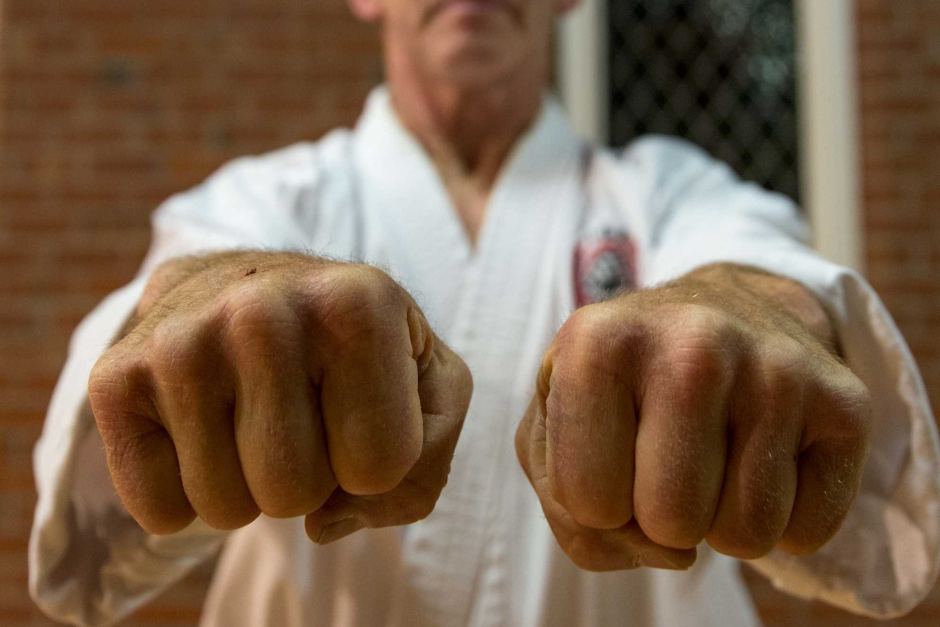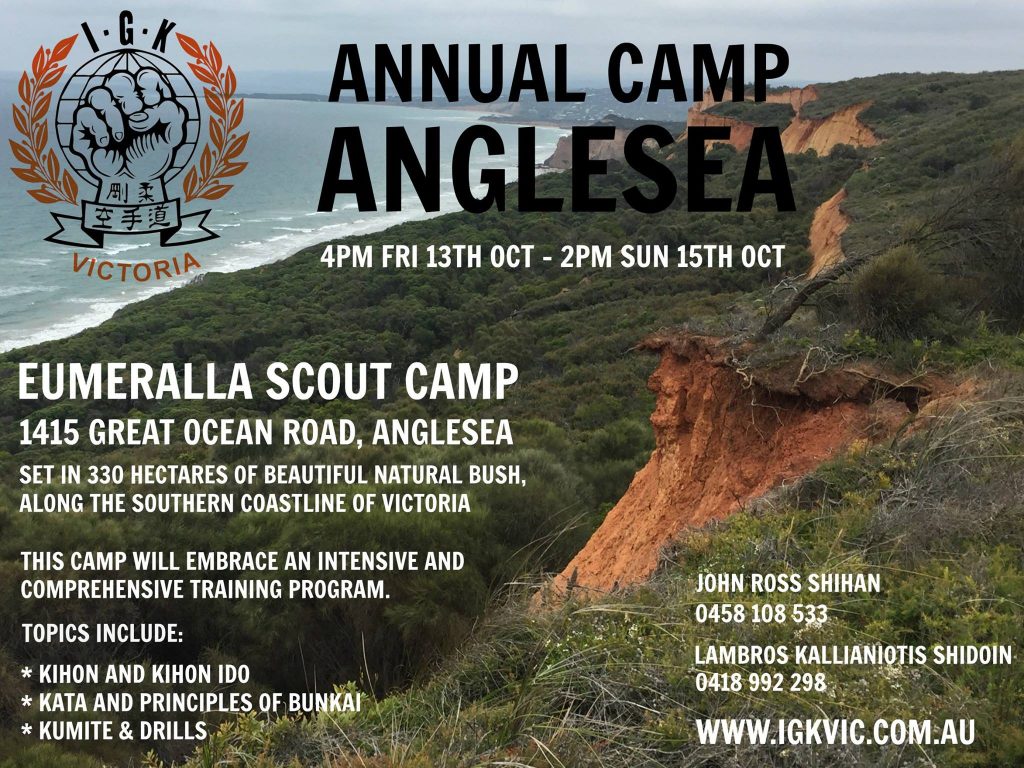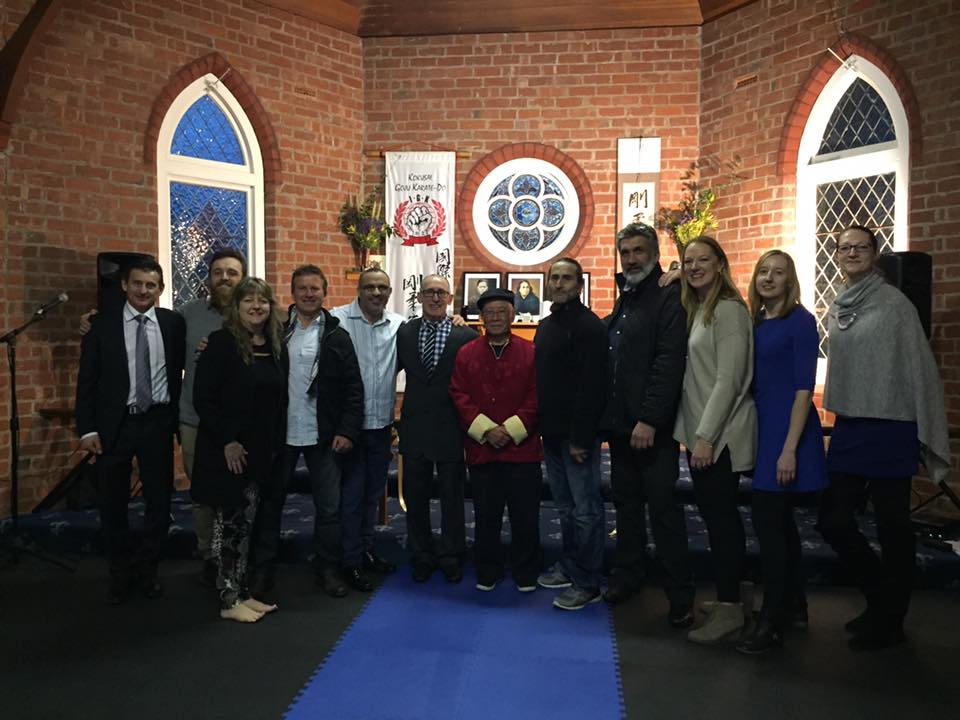tgi is The Garden Island, Kauai’s newspaper since 1901. Caleb Loehrer, Journalist, published his recent interview with Tino Ceberano Hanshi on August 25th 2019. He met with Tino Hanshi during a recent visit to his home island at the newspapers’ office in Lihue, Kauai. The article is reproduced here with all credits to Caleb and The Garden Island.

Constantino “Tino” Ceberano grew up in the 1940s on the South Side of Kauai, where he learned to scrap with the other boys who lived in the McBryde Sugar Plantation camps.
He went on to become a martial arts master and one of the most influential karate instructors in Australia, where he was recently awarded one of the country’s highest honors — Medal of the Order of Australia — for service to karate. He teaches Japanese gojukai goju-ryu karate, a traditional Okinawan martial arts discipline whose name translates literally to “hard-soft style.”
His martial arts style is complicated, the product of influences drawn from cultures and disciplines spanning countless centuries and a dozen time zones, but the underlying principle is a simple one — “The straighter the line the shorter the distance.”
Ceberano explained that concept during a recent interview at The Garden Island’s office in Lihue. This is how it went.
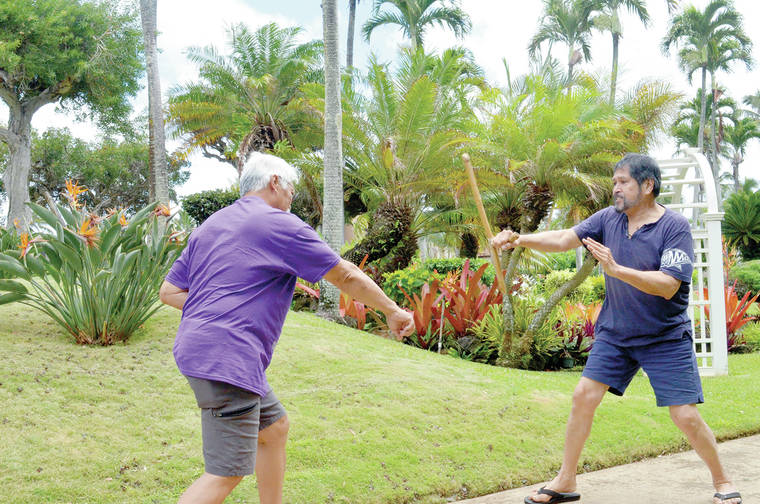
When were you born?
Before Pearl Harbor was bombed — September of 1941. And now I’m gonna be 78.
I left Kauai, heading out to go to Honolulu, and in 1959 I joined the Marines. I, in fact, was one of the first inductees when Hawaii became a state.
Why did you join the Marines in 1959?
It was an attraction for the uniform. And the thing that I also looked at — I mean, coming from here, right — it’s always been something of an attraction for me, what was beyond the blue sea, what was beyond the blue Pacific there. And you know what? I’ve already traveled to 48 countries in my time.
Were your parents born and raised here also?
No, my parents are Filipinos. My grandparents migrated here back in 1925 — and that was with my mom, who was still a little girl then — and settled in Koloa. Can you imagine that, man? They all worked in the sugar industry.
My mom, she started here in Kauai and never got to high school — just got through the early years of studies, not even getting to secondary. But like, when I was born, and it had been like from just that period of time from the war, et cetera. Things got a little bit hard.

I remember where we had lived in the sugar plantation. We were out in a place called Eleele. You know how when you go down to the Eleele road to Nawiliwili, there’s a bridge that you would cross. That bridge — below the bridge — was Camp 2. It was Camp 2 village of the McBryde Plantation.
Just where the hills just receded back into where this creek would flow — just opposite there was where our house was built. I remember the old plantation-type houses. And they was in a row of plantation houses, built alongside this river. In fact, the bridge there that you can still see from the location of where we lived had this river down at the very bottom — it was a creek, and when it sort of rained and flooded, then it was a river.
But alongside the housing, was this empty area with a big stone — a big boulder like. And I remember, even climbing up on that stone. It was just a favorite thing that I had done. Mama used to always pull me over, not to get dirty or to fall off from the big rock. And I remember those years.
Anyway, getting from there, we moved back to Koloa, where my grandparents were. And then it all got started — went to Koloa School. Then parents wanted to get on — to move on to a better place. We went up to live in Lawai, from Koloa.
As you head off down to Lawai, on the left-hand side there’s a reservoir. Right opposite the reservoir, there was a camp. There was a camp for housing — it was still McBryde Plantation. We occupied that first house, right opposite the reservoir.
And that was where I virtually grew up. From about 11 years old, right on up to when I was 17.
When did you get in your first fight?
Oh OK, now was something of a real interest, because having to leave Koloa and having to go to Lawai, we had to then go to Kalaheo School. I was in the seventh grade then. I think, coming from another school, as a stranger, you get always picked over.
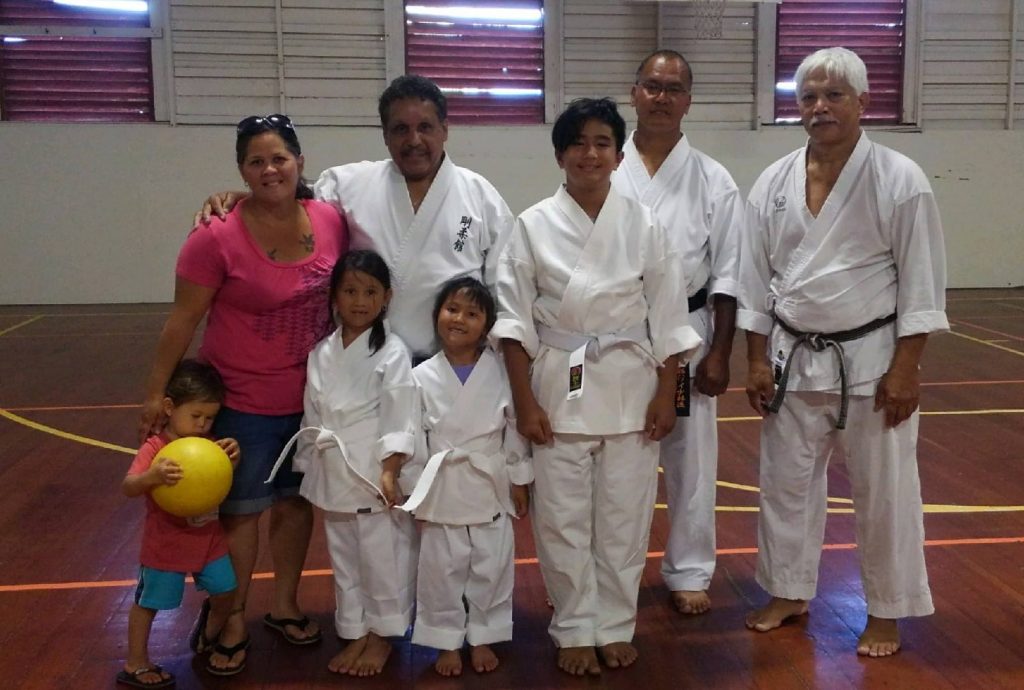
And, of course, this was something that we’d been brought up with when we were young, especially from the camp. Every one of us used to box before from our parents teaching us how to really get into the scrapping. But we call ‘em “Duke City.”
That’s what you called the camp? Duke City? Put up your dukes?
Yeah, put up your dukes. You remember the old John Wayne movies? So all that, yeah, those were the days.
So you grew up learning how to scrap?
We had to. And then, down in the Lawai Pineapple Cannery — that area just down there — there was also a gym. The Lawai Gym. And in that Lawai Gym, we — the kids from all of that area there, Lawai — used to go down there, and we used to box.
There was a boxing class there that we had, with old guys like the name of Natividad, Bromeo, et cetera. These guys were the boxers of the time here in Kauai from that area, and this is how we got to learn our fisticuffs and kick ass.
So you started boxing first. Were you a good boxer?
Well I could have gotten into the team for Kauai. If I had not — I had an accident that got slivers of glass in my right eye, and that sort of turned off my right side. I got into a car accident in between Lawai and Koloa, and we went down the bloody pineapple gap.
I was trapped under the seat there, and glass that broke from the windscreen — slivers of glass — stuck in and cut the cornea of my right eye. And my face swelled up, et cetera. I just remember myself, like in the hospital — in Koloa Hospital there — where, after about the third day, they had to do X-rays and all that because the face was swollen. I could remember having to undergo this operation that they removed the glass, and then I had to start wearing glasses then.
So I wore glasses all the while, but I still played sport. And I got into judo as well — doing judo up in Kalaheo School. It was Dr. Rex — he was a veterinarian doctor. He was partly paralyzed on one side of his body but a very good judo player.
Sometime in late 1955 or early 1956, when Ceberano was 14 years old, he met a man who returned to Kauai from the Korean War.
He was in the Army. His name was Fred Imperial. He was formerly from Honolulu. And he came and stayed with his cousin in Lawai. And we started off the kenpo then, in training what was called the Old Pine Tree system of kenpo.
What’s that?
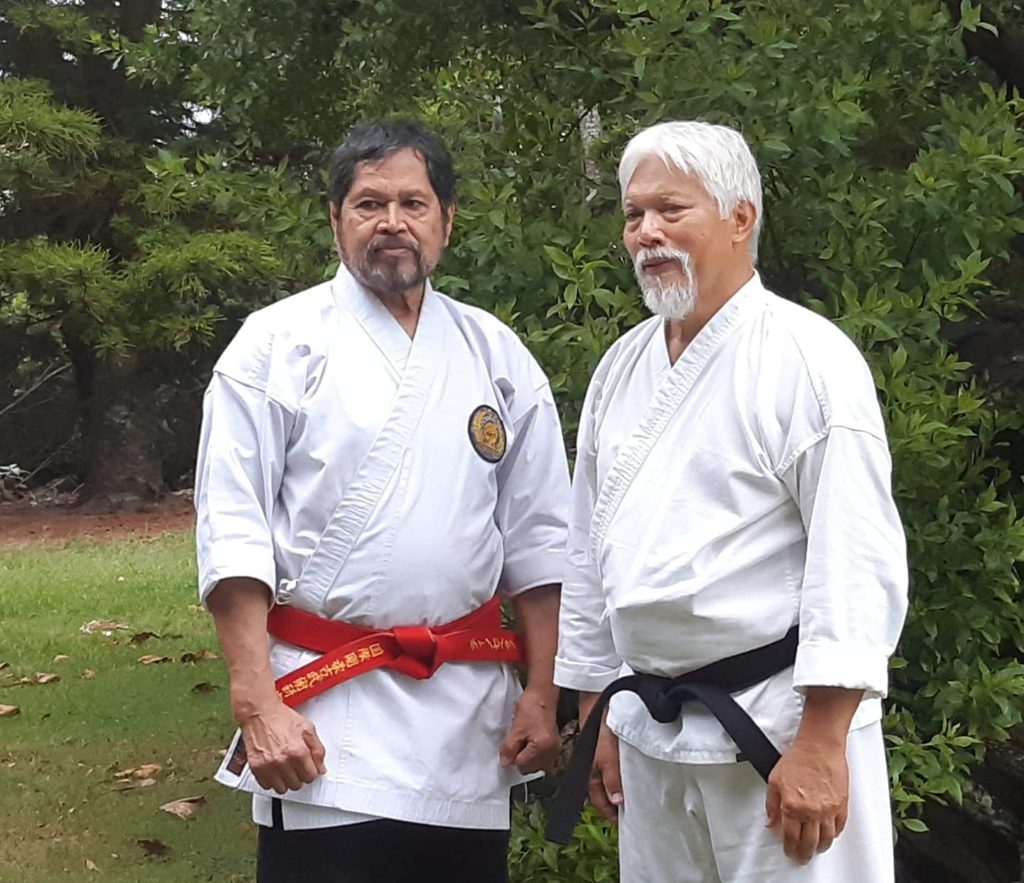
In Hawaii, from the late ’40s but into the mid ’50s, the local boys from Honolulu — from all the areas of the other islands as well — came and studied under one of the early pioneers of karate here that created what had been kajukenbo. It was something that was a mixture — more than that, like eclectic style of karate judo boxing, et cetera. And they called it kajukenbo.
In a 1993 interview with Centuron Negro Magazine, one of the founders of Kajukenbo, Adriano Emperado, described the fighting style he developed on the streets of Honolulu in the 1940s:
“I got together with four other black belts to train and develop a style of our own. I felt that the Kenpo Jujitsu system that I had learned lacked self defense techniques against multiple attackers or even multiple strikes. We had trained hard and fast to simply block and strike. We were developing the mentality of only facing one strike, and ending the fight with one focused punch. I started to ask myself, what if my attacker throws a number of strikes and kicks at me? What if my one well focused punch doesn’t put him down? This is why we got together.”
You still haven’t told about your first fight.
Going back into something of what I would consider the first fight that I thought that I had to do as best as I could. You remember I told you I moved from Kauai to Honolulu, right? Going to Honolulu, and I lived in a place called A‘ala Park.
A‘ala Park was in the main part of Honolulu, where we had what you would consider the roughies. And surprisingly enough — because it was just the closest place that I could live to where the Dole Pineapple Cannery was located.
Ceberano said he left home when he was “16 going on 17” in order to ease the financial burden on his father, by then a single parent, who “wasn’t having the easiest time earning his income.”
It was then that I had to come to grips with survival. I lived in a room that I rented out — it was about 10 by 10 — and I paid $30 a week, or something like that. And I had to share bath. I had to share kitchen, et cetera. And I worked at the cannery — the Dole Cannery down the road. I was on a dollar and 12 cents an hour, at the time.
Working 40 hours a week at $1.12 an hour would have brought home a weekly salary of $44.80 — the equivalent of about $400 today. Ceberano needed more than two-thirds of that total just to pay rent.
I survived for at least a year, before an uncle said to me that I gotta come and live with then. Then I decided to join the Marines. But in the mean time, I was also into the karate training up the road with Oshiro Sensei or with kenpo first.
Masaichi Oshiro opened a dojo in 1956 called the Te-Ken Jutsu Kai (Hand Fist Technique Club) at the McCully Recreation Center in Honolulu, a few miles from the A‘ala Park neighborhood Ceberano would move to a couple years later, according to the website for Hawaii Karate Seinenkai, an organization established in the 1930s by karate supporters from Hawaii’s Okinawan community.

Even after work you would go and train?
Oh yeah, all the local boys were into some kind of activity, and at that time, karate just really come out strong — really popular with everybody. But this was the era of what had been influenced by the cultural effect of being involved with the martial arts of the different ethnic groups.
Anybody opens up a dojo, people will come and challenge you. So you go and challenge and see if you can best the instructor. I never had to go and challenge. I’d be home, coming home, tired, et cetera — “Hey, where you from?” And I — “Handle your own business.” And boom! It was on!
And I came across one this particular night, just after having dinner before going home to sleep, in the pool room, playing pool. And this guy — loudmouth — was carrying on. And I suppose, I was just looking at him. You know what it was in those days — “Hey what you looking at?” I swear, it’s just a staring kind of thing, it’s offensive.
“You! Hey!” And I used to wear glasses. “Hey bubble eyes!” That sort of thing. And it was on. This guy was pretty big, and I never thought of it. I just kept on playing my pool, et cetera. He came on, and he push on me, and that was it. We just fought, and I tell you what, everybody just watch.
And this was something I’ll never forget, because, you know, in the days of what we call “Duke City” or “Beef,” they come around and they watch, but they never get in. They never jump in. And there was no such thing as, you’re on the ground and they’re kicking you or whatever. It was up, and we really went for each other. And of course I could handle myself pretty well, but this guy could handle himself.
So we really put on a show, I suppose. After that, this big guy comes in, and “Stop! Stop!” and then, “Okay, carry on.”
And then, you know, we became friends. After that even wherever we were, “Ah, come on! Let’s kalakala!” which means everybody put in a dollar to get the old Lucky Lager beer, and whatever it was, sitting down there. It was those days that I’d never regret and look back on.
It was the growing up of our era.

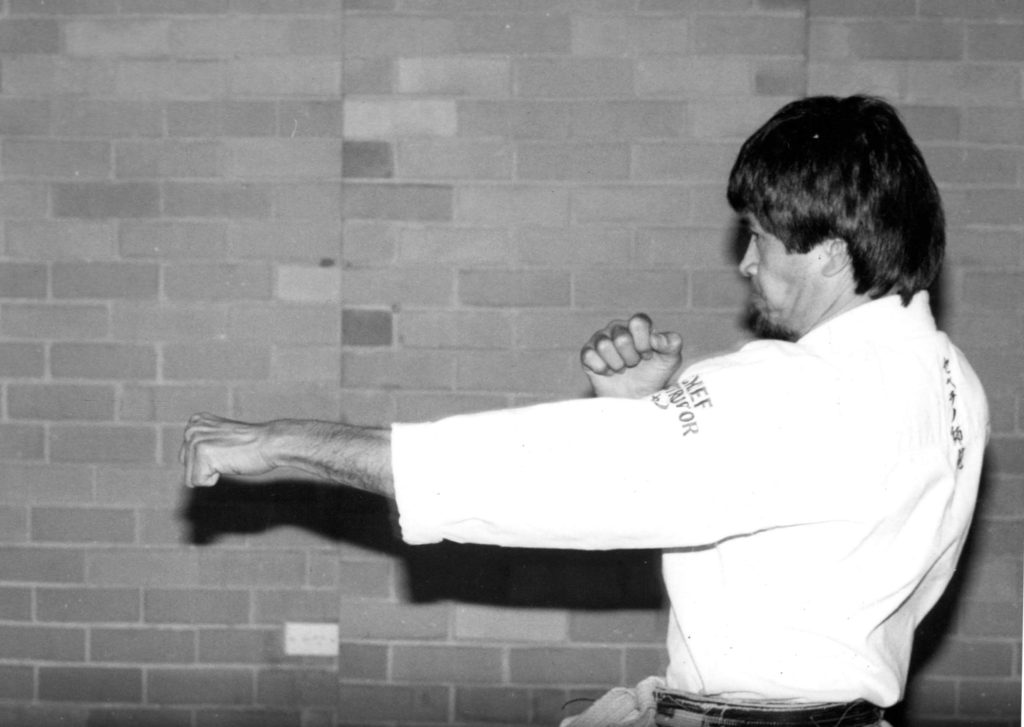

 A different style of karate is now being taught on-island. A group of instructors recently started teaching classes twice a week at All Saints Gym in Kapaa.
A different style of karate is now being taught on-island. A group of instructors recently started teaching classes twice a week at All Saints Gym in Kapaa.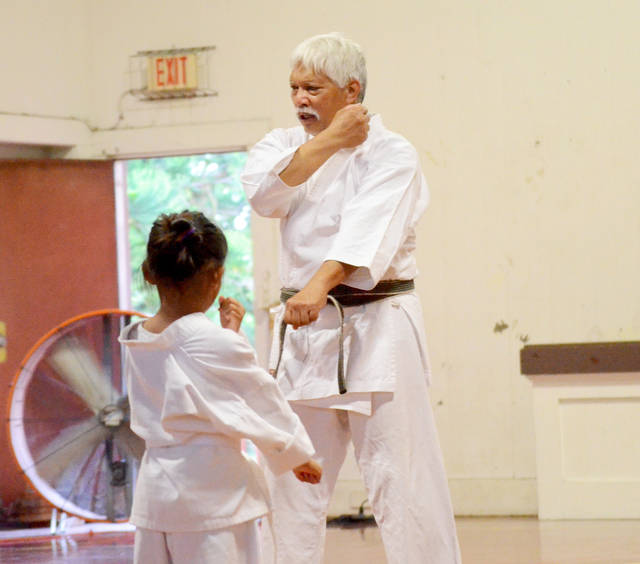


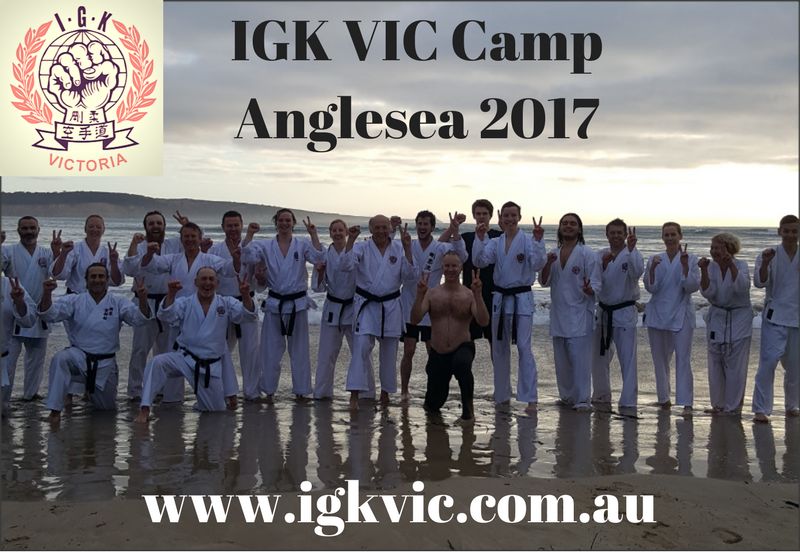 The IGK Victorian Spring Camp 2017 held at Eumeralla Scout Camp in Anglesea from Oct 13th-15th 2017 was a wonderful success. The camp was well attended with IGK Tasmania members visiting for the weekend. Perfect weather, plentiful food, strong training with lots of new information made for a great event. For the Victorians, it was great to train with IGK Tasmania, renew old friendships and make new ones.
The IGK Victorian Spring Camp 2017 held at Eumeralla Scout Camp in Anglesea from Oct 13th-15th 2017 was a wonderful success. The camp was well attended with IGK Tasmania members visiting for the weekend. Perfect weather, plentiful food, strong training with lots of new information made for a great event. For the Victorians, it was great to train with IGK Tasmania, renew old friendships and make new ones.